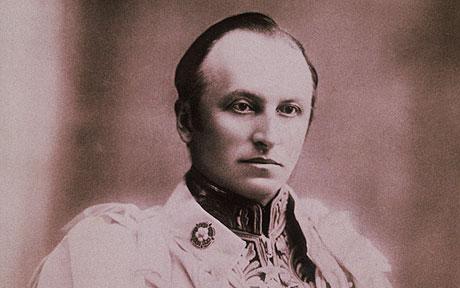LORD CURZON
1.CONTEXT
The Bardhaman municipality has decided to erect a statue of an erstwhile maharaja in front of the landmark Curzon Gate in the city.
The Bardhaman municipality has decided to erect a statute of the Maharaja Bijay Chand Mahatab and his wife Radharani in front of the city’s prominent landmark.
Of all the viceroys of India, Curzon is possibly the most criticized – he is the man who partitioned Bengal in 1905 and triggered a wave of Bengali nationalism that contributed to the wider Indian national movement. He was also one of the more openly imperialist viceroys and a man who saw Britain's rule over India as critical to the survival of the empire. In 1900, Curzon famously stated 'We could lose all our (white settlement) dominions and still survive, but if we lost India, our sun would sink to its setting.
2.ABOUT CURZON

- Born in 1859, George Nathaniel Curzon was a British conservative politician who was educated at the elite institutions of Eton and Oxford.
- He served as Under Secretary of state for India (1891-1892) and for Foreign affairs (1895-1898), before being appointed Viceroy of India in 1899.
- As Viceroy, his administration was known for intense activity and emphasis on efficiency.
- Curzon created a separate Muslim majority province of the North–West province, sent a British expedition to Tibet, established a separate police service, and established the Archaeological Survey of India, to study and protect historical monuments.
- Early on in his career, Curzon earned some praise from his colonial subjects for taking action against Europeans in several high-profile racist attacks against Indians.
3.ANGST TOWARDS HIM
- He took a series of extremely unpopular measures, including passing 1899, the Calcutta Municipal Amendment Act which reduced the number of elected representatives in the Calcutta Corporation, the Indian Universities Act 1904 which placed Calcutta University under government control, and the Indian Officials Secrets Amendment Act 1904 that reduced the freedom of the press even further.
- He believed that the Indian National Congress had lost its influence and appeal amongst the Indians, and in 1900 declared that the organization was tottering to its fall.

4.PARTITION OF BENGAL
- Calcutta was the capital of the British Raj and the Bengal Presidency and was one of the largest provinces in India, populated by more than 78 million people, encompassing present-day West Bengal, Bangladesh, Bihar, Parts of Chhattisgarh, Odisha, and Assam.
- For a long the British maintained that Bengal was too, large to efficiently manage and administer, it was also believed that with Calcutta as the nerve centre of the educated nationalist, the resistance to colonial rule would only increase.
- In July 1905, Curzon announced the partition of Bengal into two provinces East Bengal and Assam with a population of 38 million, which was predominately Muslim, while the Western province called Bengal was reduced to 55 million people, primarily Hindus.
- The protest began almost immediately after the announcement, with meetings taking place in more than 300 cities, towns, and villages across Bengal
5.CONSEQUENCES OF PARTITION
- Popular anger against partition had been brewing since the British announced their scheme, but grew into a stronger and more organized movement after it was implemented in 1905.
- In opposition to the partition, nationalist leaders organized a campaign of a boycott of British goods and institutions and encouraged the use of local products
- After a formal resolution was passed at a meeting in Calcutta in August 1905, the Swadeshi movement began.
- There was a surge in nationalist rhetoric and the song" Vande Mataram “set to music by Rabindranath Tagore became the informal anthem of the movement.
- The Swadeshi movement and boycott were not restricted to Bengal and spread to other parts of the country
- Several secret societies such as the Anushilan Samiti of Bengal sought to overthrow British rule through violent means
- Revolutionary groups used bombs to attempt to assassinate colonial officials and engaged in armed robberies to finance their activities.
- In 1905 Curzon resigned and returned to England after losing a power struggle with the commander in chief of the British Army, Lord Kitchener.
- The protest continue after he exist and the colonial government in 1911 announced the reunification of Bengal and the Capital of the Raj was shifted from Calcutta to Delhi
Source:indianexpress




